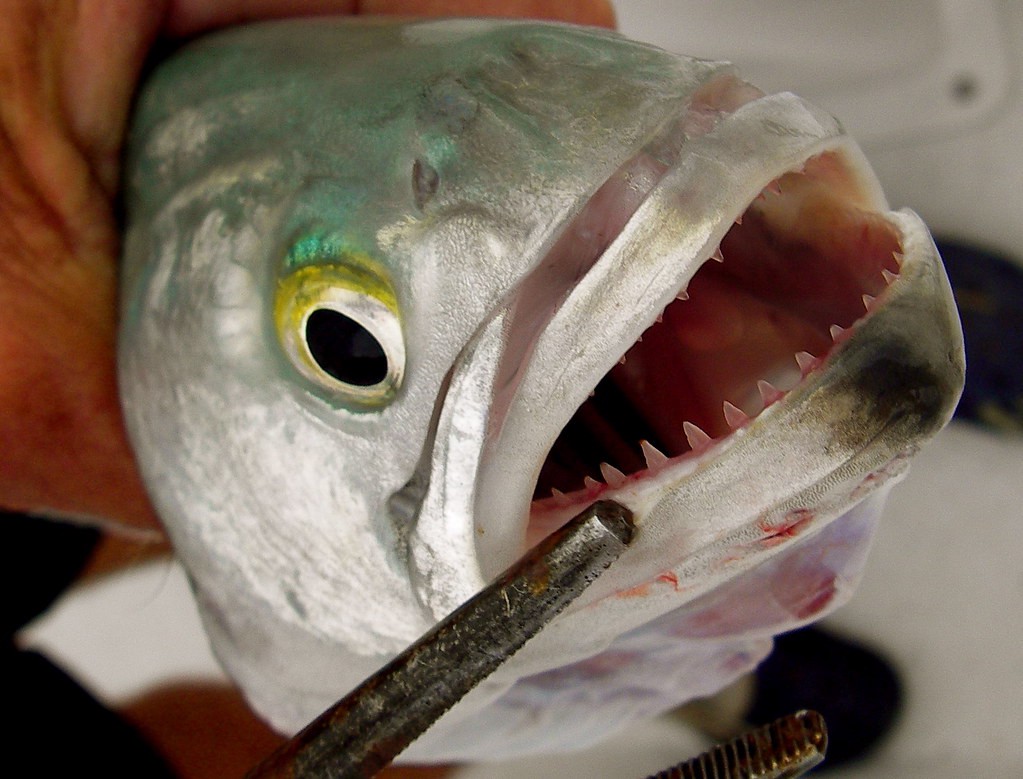
Bluefish are a type of predatory fish found in the Atlantic Ocean, as well as in the Mediterranean and Black Seas. They are known for their striking blue-silver color and their sharp teeth, which they use to catch and eat other fish, crustaceans, and even small birds and mammals. In this blog post, we will take a closer look at the teeth of bluefish and how they are adapted for hunting and feeding.
Bluefish teeth are located in both the upper and lower jaws, as well as in the roof of the mouth. The teeth are triangular in shape and have a serrated edge, which helps them to grip and tear their prey. The teeth in the upper jaw are generally larger and more pointed than those in the lower jaw, and the ones in the roof of the mouth are smaller and more rounded.
One of the most distinctive features of bluefish teeth is their arrangement in the jaw. Unlike many other fish species, which have rows of teeth that are all the same size, bluefish have several rows of teeth that are arranged in a graduated pattern. This means that the teeth in the front of the jaw are smaller and more closely spaced, while the ones at the back of the jaw are larger and more widely spaced.
This graduated arrangement of teeth is thought to be an adaptation that allows bluefish to catch and eat a wide variety of prey. The small, closely spaced teeth in the front of the jaw are well suited for catching and holding onto small, slippery fish, while the larger, widely spaced teeth at the back of the jaw are better equipped to crush and grind harder prey, such as crustaceans.
In addition to their hunting and feeding adaptations, bluefish teeth also play an important role in the social behavior of these fish. Bluefish are highly social creatures and often form large schools that can contain hundreds or even thousands of individuals. Within these schools, bluefish engage in a variety of social behaviors, such as aggression, courtship, and dominance displays.
One way that bluefish communicate and establish dominance within their schools is through the use of their teeth. Bluefish have a habit of “gaping,” which involves opening their mouths and displaying their teeth to other individuals in the school. This behavior is often seen during feeding or mating situations, and it is thought to serve as a way for individuals to establish their dominance and territory within the group.
In conclusion, the teeth of bluefish are a crucial adaptation that allows these predatory fish to catch and eat a wide variety of prey, as well as communicate and establish dominance within their social groups. The triangular shape and serrated edge of their teeth help them to grip and tear their prey, while the graduated arrangement of teeth in their jaws allows them to catch and hold onto small fish as well as crush and grind harder prey. Understanding the anatomy and function of bluefish teeth can help us to better understand these fascinating and important creatures, and the role they play in the marine ecosystem.